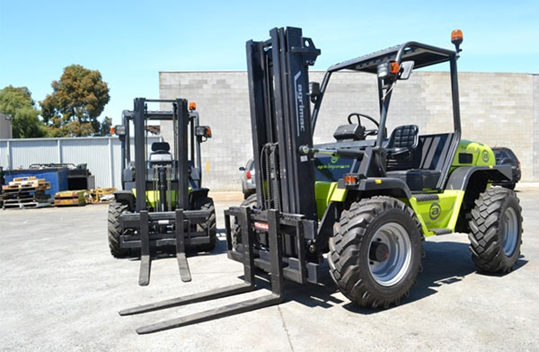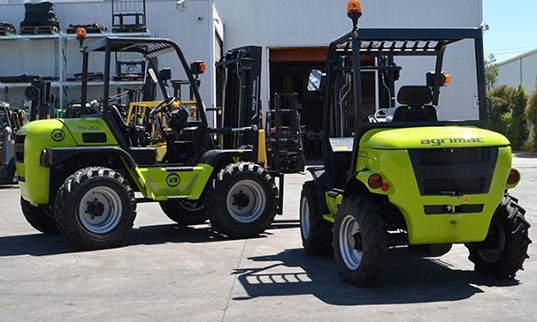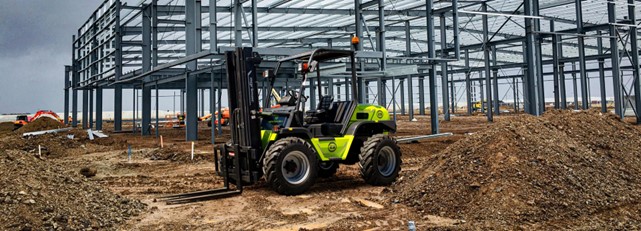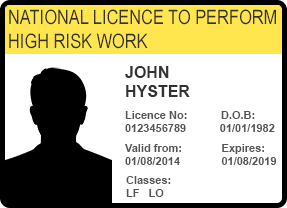Rough Terrain Forklifts: Essential Features and Applications
With a wide variety of forklifts available on the market, it’s crucial to identify the one that best suits your specific needs and applications.
In this blog, we’ll explore Rough Terrain Forklifts (RTFs) also known as all-terrain forklifts. We’ll delve into their essential features and diverse applications to help you understand why they are the perfect machine for handling challenging environments and demanding tasks. We will look at
- What is a Rough Terrain Forklift?
- Key Features of These Machines
- Prime Applications
- Choosing the Right Forklift
- Safe Operation Practices
- Rough Terrain Forklift Licence

What is a Rough Terrain Forklift?
Belonging to Class VII, a rough terrain forklift is specifically designed to operate efficiently on uneven, outdoor surfaces. These forklifts are characterised by their large tyres, high ground clearance, and powerful engines, which allow them to navigate rugged terrain with ease. Unlike standard forklifts, rough terrain models are built to handle challenging environments and heavy loads, making them indispensable for various industrial and construction applications.
Although predominantly suited for outdoor settings, these versatile forklifts can also be used in typical warehouse settings as well.

Key Features of These Machines
Rough terrain forklifts boast several key features that set them apart from other forklift types. These features include robust tyres, heavy-duty suspension, powerful engines, enhanced stability and 4×4 wheel drive. Each feature is designed to enhance the forklift’s performance and adaptability, making it exceptionally well-suited for handling challenging applications.
Here’s a closer look at how each feature contributes to the forklift’s capabilities:
Tyres: The oversized, heavily treaded tyres provide superior traction and stability on uneven and loose surfaces, such as gravel, mud, and grass. Their durability helps prevent punctures and ensures reliable performance on rough terrain.
Suspension: Heavy-duty suspension allows the forklift to navigate over obstacles like rocks and tree roots without damaging the undercarriage. This added clearance also improves the forklift’s ability to handle steep inclines and uneven grounds.
Engine: The powerful engine provides the high torque necessary for lifting heavy loads and climbing steep inclines. Designed for durability, it can withstand the stresses of operating in rugged conditions while offering efficient performance. Many rough terrain forklifts use diesel engines to boost power and maintain efficiency under demanding tasks. It is important to note that diesel engines must not be used in confined spaces due to asphyxiation risks.
4×4: The 4×4 wheel drive system distributes power to all four wheels, enhancing traction and stability on uneven surfaces. This drivetrain allows the forklift to navigate rough terrain with improved control and manoeuvrability, making it capable of handling challenging slopes and obstacles with ease.
Enhanced Stability: Rough terrain forklifts are designed with enhanced stability features, including heavy-duty frames and advanced stability systems. The reinforced frames ensure structural integrity under heavy loads, while the stability systems help maintain balance and prevent accidents, making these forklifts reliable and safe for use in challenging environments.
Application Suited to a Rough Terrain Forklift
Rough terrain forklifts are especially useful for tasks that require robust equipment to handle heavy loads in difficult conditions. The most popular applications for these mighty forklifts include construction sites, farms and outdoor material handling. It is crucial to understand what the best forklift is for the application at hand.
Construction Sites: On construction sites, rough terrain forklifts excel at moving materials across uneven ground. Their ability to navigate rough surfaces and carry heavy loads makes them essential for transporting construction materials like steel beams, concrete blocks, and equipment.

Agricultural Operations: In agricultural settings, these forklifts help with the handling of large bales of hay, feed, and other bulky items. Their durability and power make them well-suited for working in fields and other outdoor environments. For more on forklifts in agriculture, see our guide to forklifts for the agriculture industry.

Understanding the specific requirements of your application is crucial for selecting the best forklift. The right choice will ensure optimal performance, safety, and efficiency in handling your tasks.
Choosing the Right Forklift
When choosing a rough terrain forklift, it’s essential to evaluate the full range of models available, as each is designed to meet specific needs and conditions. Key factors to consider include lift capacity, tyre type, engine power, ergonomic features, and available attachments.
Capacity: Capacity: Rough terrain forklifts vary in their maximum lift capacities, ranging from smaller models with capacities of around 2,000 kg to larger models that can handle up to 5,000 kg or more. Choosing the right capacity depends on the specific loads you need to lift.
Tyre Type: The size and type of tyres can vary significantly. Some rough terrain forklifts use larger, heavily treaded tyres for better traction and stability on extremely uneven surfaces, while others might have slightly smaller or more specialised tyres for specific conditions.
Engine Type: Diesel engines are the most common, but some models may feature turbocharged engines for enhanced performance. Electric or hybrid models are less common but may be available for specific applications.
Ergonomic Features: Differences in cab design, including ergonomics, visibility, and controls, affect operator comfort and safety. Features like air conditioning, adjustable seats, and improved visibility can vary.
Attachments: Many machines can often be equipped with various attachments, such as winches, buckets, or spreader bars, to increase versatility. The availability and compatibility of these attachments can differ between models.
How to Drive a Rough Terrain Forklift Safely
Operating a rough terrain forklift safely involves several key practices. Begin with thorough pre-operation checks to inspect the forklift for any issues, ensure fluid levels are adequate, and verify that all controls and safety features are functional. Operators must hold an applicable High-Risk Work Licence to operate the equipment.
When operating the forklift, always wear appropriate safety gear and handle loads carefully. Ensure that loads are stable and within the forklift’s capacity and maintain clear visibility of your surroundings. Lift loads smoothly and avoid sudden movements.

While driving on rough terrain, reduce speed and use the 4×4 drive on uneven surfaces for better traction. Avoid sudden turns and manage slopes with caution. Clear any obstacles from the path and choose stable ground for parking. When leaving the forklift unattended, make sure it is properly secured with all accessories/tynes lowered safely on the ground.
Finally, be familiar with emergency procedures, including how to safely shut down the forklift and report any issues immediately. Following these practices will help ensure safer operations and minimise risks.
Licensing and Certification Requirements
Operating a rough terrain forklift requires an LF Class licence. This licence covers the operation of forklifts in general, including rough terrain models. Operators must complete an accredited training course and pass both a written and practical assessment to obtain this licence.

Additional training or endorsements may be required for rough terrain operations, focusing on the unique handling and safety aspects of these forklifts. Regular refresher courses are also recommended to maintain compliance and ensure up-to-date knowledge of safety practices. Always refer to the latest Australian Standards and regulations for specific requirements.
Find Rough Terrain Forklifts and More at Adaptalift
In summary, rough terrain/all-terrain forklifts are essential for handling heavy loads and navigating challenging environments. Their robust features and versatile applications make them an asset in various industries. For more information and to browse our selection, visit Adaptalift Group or contact 13 22 54 and discover the right forklift for your needs.